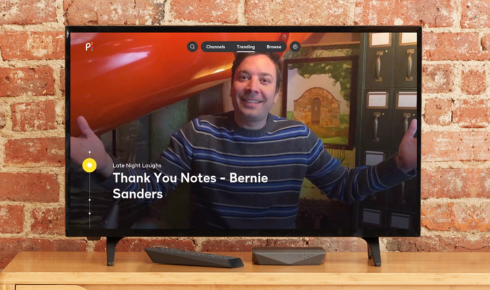Peacock TV, NBCUniversal’s streaming platform, offers a mix of free, premium, and ad-supported content. Advertising plays a crucial role in Peacock’s business model, particularly for its free and lower-tier subscription plans. This guide explores how advertising works on Peacock TV, covering ad formats, targeting strategies, revenue models, and the user experience.
1. Peacock TV’s Business Model and Ad-Supported Tiers
Peacock TV operates under three primary tiers:
- Peacock Free – A no-cost, ad-supported plan with limited content.
- Peacock Premium – A paid tier ($5.99/month) with ads and full content access.
- Peacock Premium Plus – An ad-free version ($11.99/month) of the Premium tier.
Advertising primarily impacts the Free and Premium tiers, where users see commercials in exchange for reduced or no subscription fees.
Why Ads Matter for Peacock
- Revenue Generation: Ads help offset content licensing and production costs.
- User Acquisition: Free ad-supported tiers attract more users who may later upgrade.
- Competitive Edge: Unlike Netflix and Disney+, Peacock leverages ads to offer a free tier.
You May Also Like- Peacock : Start Streaming Today with This Simple Login Guide Visit : Peacocktv.com/tv
2. Types of Ads on Peacock TV
Peacock employs several ad formats, balancing monetization with user experience:
A. Pre-Roll Ads
- Short ads (5-30 seconds) before a show or movie starts.
- Common in free tiers but also appear in Peacock Premium.
B. Mid-Roll Ads
- Ads inserted during natural breaks in content (e.g., TV show pauses).
- Typically 15-30 seconds long, with multiple slots in longer content.
C. Post-Roll Ads
- Less common, appearing after content ends.
- Often used for promotional content or related ads.
D. Interactive Ads
- Some ads include clickable CTAs (e.g., “Learn More” or “Visit Website”).
- Used for direct response marketing.
E. Branded Content & Sponsorships
- Some shows feature integrated brand mentions (e.g., “Brought to you by XYZ”).
- Similar to traditional TV product placements.
3. How Ad Targeting Works on Peacock
Peacock uses data-driven advertising to serve relevant ads, improving engagement and advertiser ROI.
A. First-Party Data Collection
Peacock gathers user data such as:
- Viewing habits (genres, shows watched).
- Demographics (age, gender, location if provided).
- Device & engagement metrics (watch time, ad skip rates).
B. Third-Party Data Partnerships
- Peacock may integrate with data providers (e.g., Experian, Nielsen) for enhanced targeting.
- Enables interest-based and behavioral ad matching.
C. Contextual Advertising
- Ads are matched to content themes (e.g., sports ads during games).
D. Programmatic Advertising
- Automated real-time bidding (RTB) for ad placements.
- Advertisers bid for impressions, and the highest bidder’s ad is shown.
You May Also Like- Peacock : Start Streaming Today with This Simple Login Guide Visit : Peacocktv.com/tv
4. Ad Load and Frequency
Peacock’s ad load varies by tier:
- Free Tier: Highest ad frequency (~5-8 minutes per hour).
- Premium Tier: Reduced ads (~3-5 minutes per hour).
- Premium Plus: No ads (except live sports/events).
Compared to traditional TV (15+ minutes of ads per hour), Peacock offers a lighter ad load.
5. Advertiser Benefits & Pricing Models
A. Cost Models
- CPM (Cost Per Mille): Advertisers pay per 1,000 impressions.
- CPC (Cost Per Click): For interactive ads with measurable clicks.
- Sponsorships & Fixed Deals: Premium advertisers secure exclusive placements.
B. Measurement & Analytics
- Peacock provides advertisers with metrics like:
- View-through rates (VTR).
- Completion rates (how many users watch the full ad).
- Conversion tracking (for direct-response campaigns).
C. Exclusive Ad Opportunities
- Live Sports & Events: High-value ad slots during Premier League, NFL, or WWE.
- Original Shows: Sponsorships for Peacock exclusives like The Office or Poker Face.
6. User Experience & Ad Tolerance
A. Ad Skipping & Avoidance
- Peacock does not allow ad skipping in free/premium tiers.
- Some users upgrade to Premium Plus to avoid ads entirely.
B. Personalization & Relevance
- Better-targeted ads improve engagement (e.g., a sports fan sees Nike ads instead of unrelated products).
C. Ad Fatigue & Complaints
- Some users report repetitive ads, a common issue in streaming.
- Peacock aims to balance ad load to prevent viewer drop-off.
7. Future of Advertising on Peacock
A. Advanced Ad Tech (AI & Dynamic Ads)
- AI-driven ad insertion for hyper-personalization.
- Dynamic ad replacement (updating ads in real time).
B. Interactive & Shoppable Ads
- QR codes or instant purchase options within ads.
C. Expanded Ad-Supported Content
- More free-tier content to attract ad-supported users.
You May Also Like- Max : Start Streaming Today with This Simple Login Guide Visit : Max.com/providers
Conclusion
Advertising on Peacock TV is a sophisticated system blending traditional TV ad models with digital targeting. By leveraging user data, programmatic buying, and tiered subscriptions, Peacock maximizes revenue while keeping ads relevant. As streaming competition grows, Peacock’s ad strategy will continue evolving, balancing monetization with viewer satisfaction.
For users, ads are the trade-off for free or cheaper content, while advertisers gain precise targeting unavailable in linear TV. The future of Peacock ads lies in smarter targeting, interactivity, and seamless integration—ensuring both profitability and a quality user experience.

